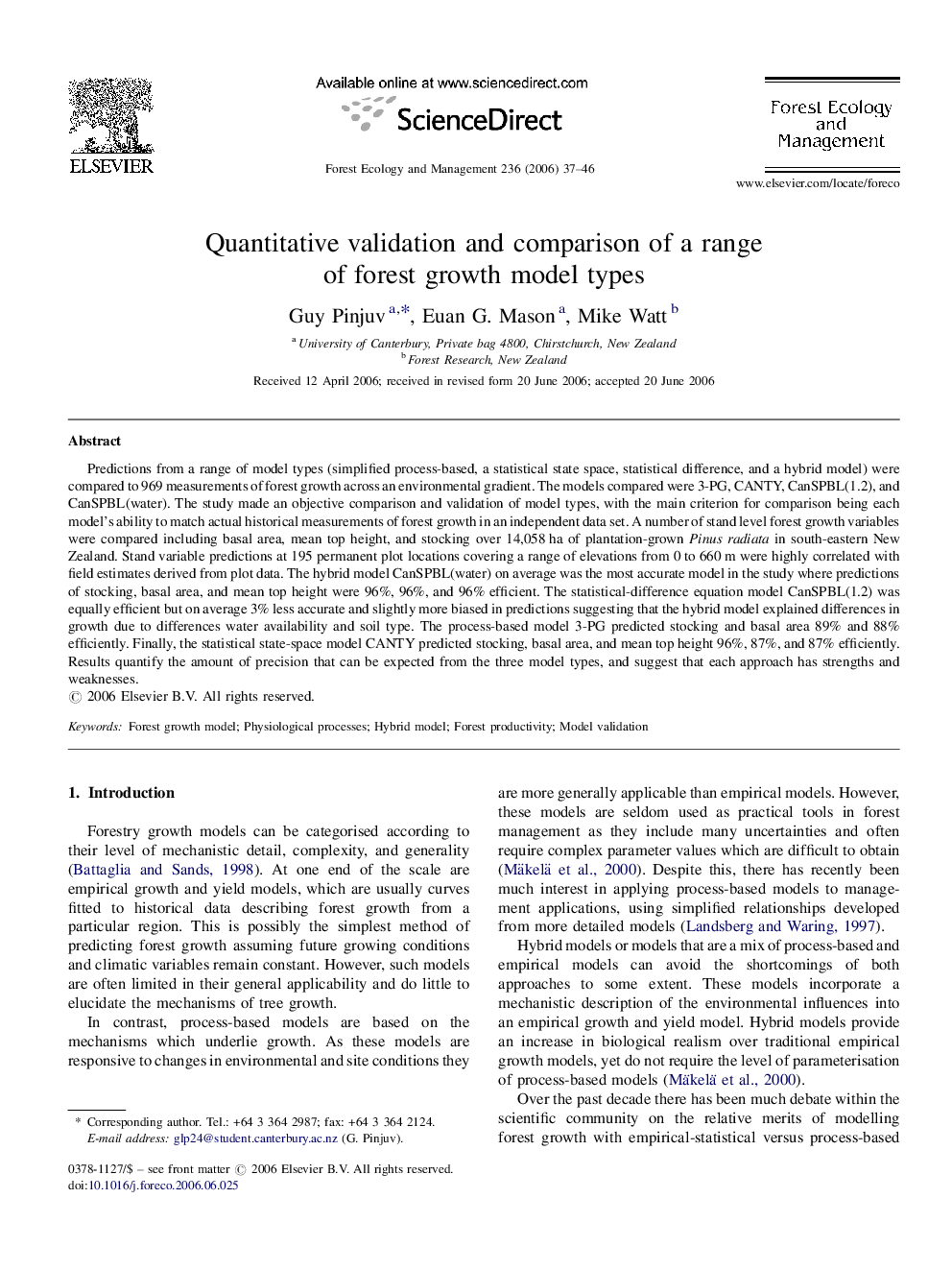| کد مقاله | کد نشریه | سال انتشار | مقاله انگلیسی | نسخه تمام متن |
|---|---|---|---|---|
| 90374 | 159377 | 2006 | 10 صفحه PDF | دانلود رایگان |

Predictions from a range of model types (simplified process-based, a statistical state space, statistical difference, and a hybrid model) were compared to 969 measurements of forest growth across an environmental gradient. The models compared were 3-PG, CANTY, CanSPBL(1.2), and CanSPBL(water). The study made an objective comparison and validation of model types, with the main criterion for comparison being each model's ability to match actual historical measurements of forest growth in an independent data set. A number of stand level forest growth variables were compared including basal area, mean top height, and stocking over 14,058 ha of plantation-grown Pinus radiata in south-eastern New Zealand. Stand variable predictions at 195 permanent plot locations covering a range of elevations from 0 to 660 m were highly correlated with field estimates derived from plot data. The hybrid model CanSPBL(water) on average was the most accurate model in the study where predictions of stocking, basal area, and mean top height were 96%, 96%, and 96% efficient. The statistical-difference equation model CanSPBL(1.2) was equally efficient but on average 3% less accurate and slightly more biased in predictions suggesting that the hybrid model explained differences in growth due to differences water availability and soil type. The process-based model 3-PG predicted stocking and basal area 89% and 88% efficiently. Finally, the statistical state-space model CANTY predicted stocking, basal area, and mean top height 96%, 87%, and 87% efficiently. Results quantify the amount of precision that can be expected from the three model types, and suggest that each approach has strengths and weaknesses.
Journal: Forest Ecology and Management - Volume 236, Issue 1, 15 November 2006, Pages 37–46